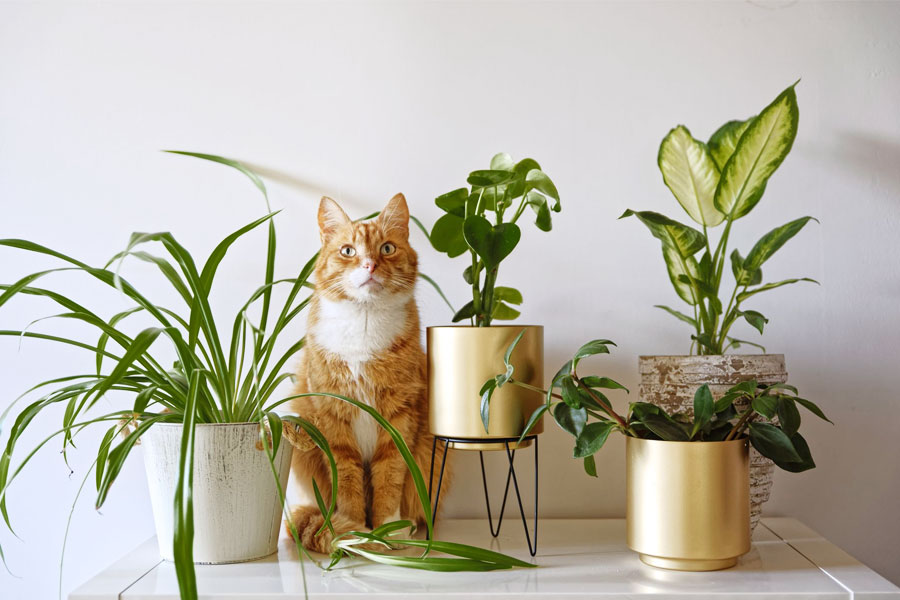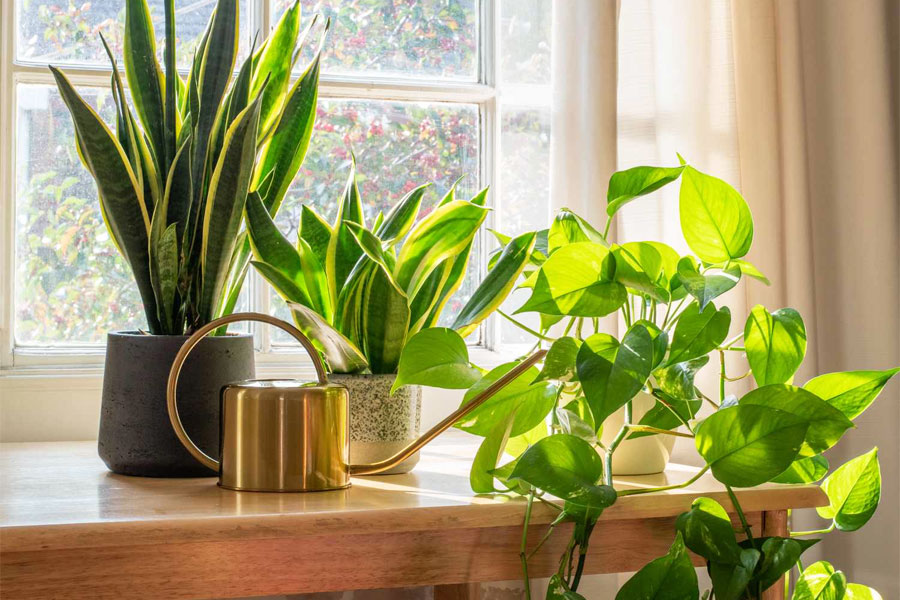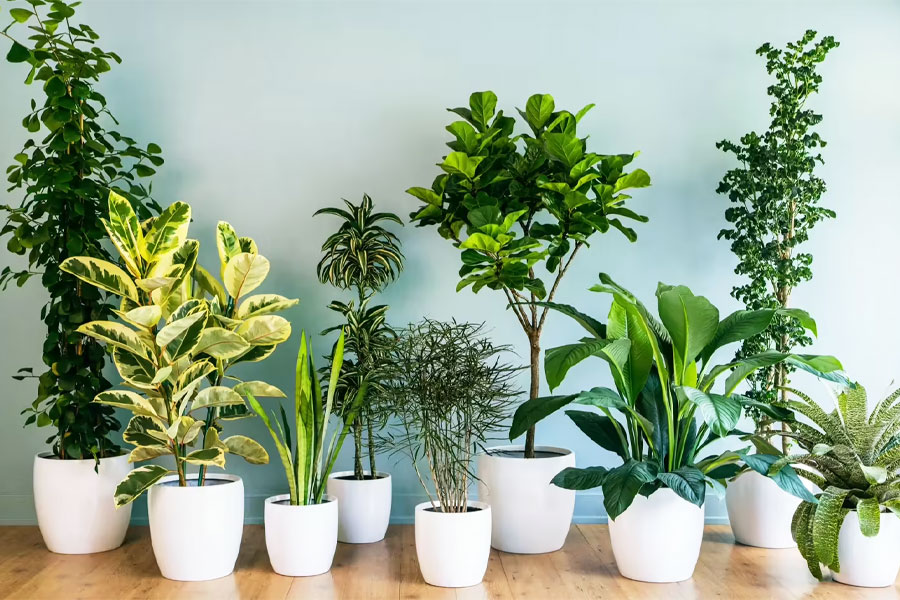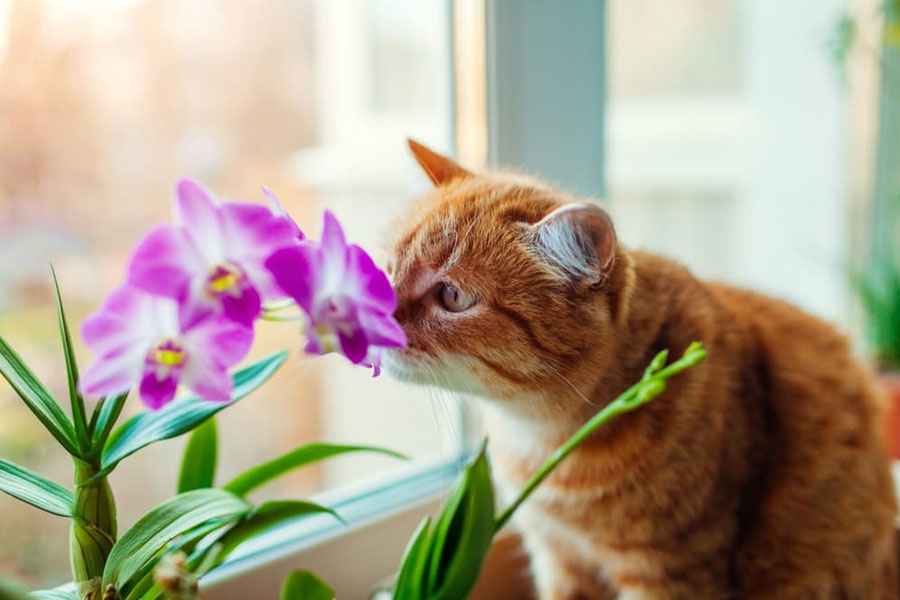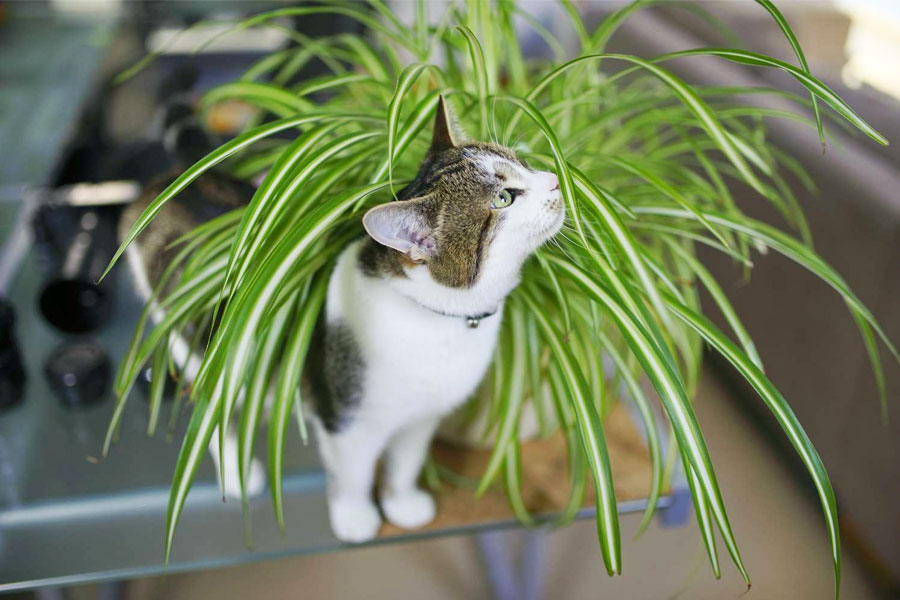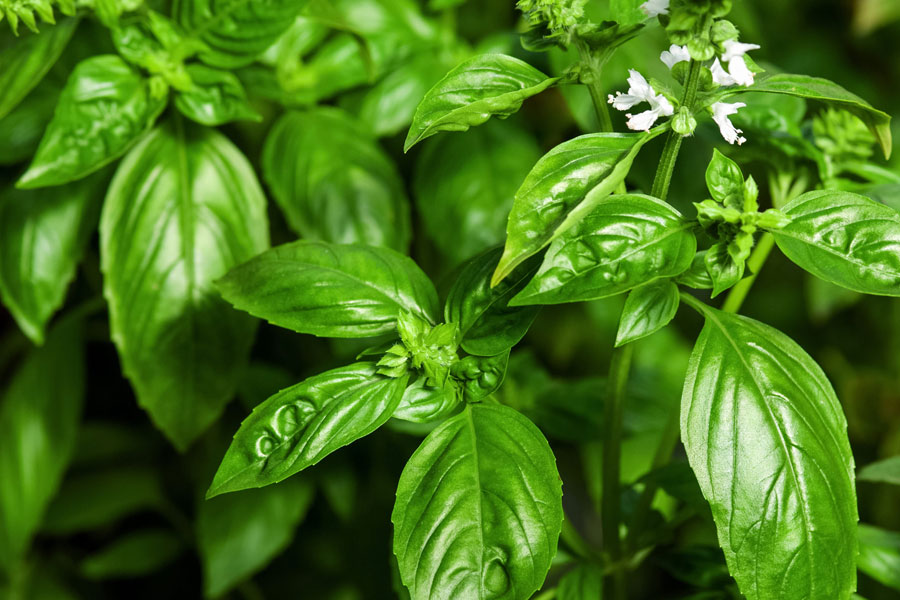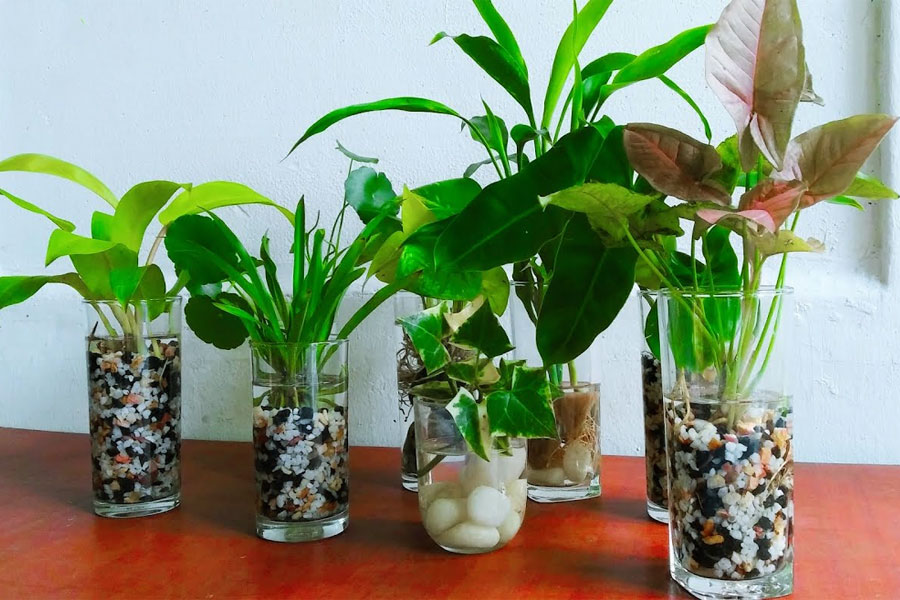
Water plants are an excellent way to enrich the interiors of your house and represent tranquility, stability, and regeneration. Aquatic plants brighten up dull surroundings and bring color and beauty. Bethemuse, most water plants are disease- and insect-resistant, so placing them indoors lets you get fresh air inside.
Cultivating water plants indoors requires little effort and provides several benefits while requiring little maintenance. Arranging water plants indoors or outdoors is an excellent and cost-effective home design concept. We’ve compiled a list of the top 15 water plants you can choose from to brighten your area rapidly.
What is Aquatic Gardening?
This type of gardening grows some green companions in water bodies like ponds, tanks, containers, flower vases, and aquariums, which we call aquatic plants. This gardening approach is ideal for combining the wonder of water with the beauty of plants.
Aquatic plants are greenery that takes water as its habitat for life, reducing the need for rich plant soil. These vary from hydroponic plants in that the latter propagate green friends through water, even those that can grow without it. Aquatic plants, like hydroponic gardening, require liquid fertilizers to thrive.
What are the Types of Aquatic Plants?
Aquatic plant beauties are further divided into three categories according to the depth of water submersion.
1. Emergent Plants: After maturity, such greenery peaks out of the water, with vegetative and ornamental plants rising into the air, paving the way for improved photosynthesis.
2. Submerged Plants: These aquatic beauties prefer to stay buried entirely beneath the water’s surface since they love it.
3. Floating Plants: There are two types of floating plants. One with roots in the substrate, allowing just the plant to float, and another that freely floats over water.
Top 15 Plants That Grow in Water
1. Lucky Bamboo

Lucky bamboo is a preferred housewarming gift because of its reputation for bringing good luck into the home.
The bamboo signifies wood, while the crimson ribbon surrounding it indicates fire. Together, they provide life stability and security. Place these in a glass pot with water, garnish with some stones, and enjoy the revitalizing environment that fills your home.
2. Money Plant

Money plants are well-known for their low maintenance requirements and long lifespan. They thrive in bright, well-lit environments but can also withstand low light. With its long cascading tendrils, the Money Plant is an excellent tabletop or hanging plant. Pothos plants may be taught to grow on poles or trellises.
Money plants are particularly effective in cleaning the air of dangerous substances. They are live air purifiers that remove common household contaminants, making them a healthy and attractive addition to your home.
3. Forget-Me-Not Plant

Woodland forget-me-nots are short-lived perennials prized for their color. Pink buds give way to tiny, beautiful, five-petaled blue blooms measuring half an inch. Forget-me-not is a small plant (typically just 5 inches at maturity) with a modest growth rate. It has hairy stems and solitary blooms developing at the end of bunches of flowering stalks.
Forget-me-nots are cold-hardy. Although they may grow in sun and shade, they prefer wet, wooded woodland areas. In hot, southern regions, they thrive in shaded areas. These water plants are perennials that may brighten anyone’s day just by being present.
4. Water Hyacinth

Water hyacinth was first introduced to the United States in 1884 during the Cotton States Exposition in New Orleans as an aquatic decorative plant. It is currently found in freshwater systems across the Southeast, California, and Washington state. In Florida, where water hyacinth held the upper hand in plant management for 100 years, it is now under care and is nowhere near as prolific as it once was.
Aquatic plant managers try to keep water hyacinth levels as low as feasible in exchange for maintaining the function of rivers and lakes. Aside from its aesthetic value, this water plant can collect hazardous metals such as mercury, cobalt, nickel, and cadmium from the air, making it a visually appealing air purifier for your home.
5. Water Bamboo

The Water Bamboo plant (Dracaena sanderiana) is famous as a Southeast Asian houseplant. People commonly recognize it for its ease of upkeep and association with good fortune. While these plants may be grown indoors and outdoors, they require robust and indirect light.
Bamboo plants should be watered regularly to prevent the soil from becoming moist. Fertilization is required once a month during the growth season. These common house plants are a beautiful addition to home or workplace décor.
6. Water Stargrass

Water star-grass is a beautiful aquatic plant. When it blossoms, it is simple to recognize. Each bloom is a bright yellow star with six slender petal lobes that emerge just above the water’s surface. It is a herbaceous perennial with thin, elongated, branching stems. The plants grow in loose clumps floating or rooted on muddy shorelines.
They reproduce by dispersing seeds and fragmenting stalks. This water plant has a thin, multi-branched stem on which long grass-like leaves grow alternately. Its little yellow blooms are petite and narrow, with six delicate petals.
7. Lotus (Water Lilies)

Water lilies, also known as Nymphaea, are aquatic gems. Like the closely related lotus (Nelumbo), they are rooted in soil and appear to float above the water’s surface. The blooms are spherical, centered on a radial notch.
This water plant is an essential component of Asian culture. Its pleasant aroma may instantly improve the ambiance of your home, making it even more lively. It denotes purity, incarnation, creation, and beauty, among other qualities.
8. Water Cabbage

Water lettuce, sometimes known as water cabbage, is a floating, non-edible pond plant with fuzzy rosettes of leaves that resemble lettuce heads. Each leaf features thick ribs, parallel veins, scalloped margins, and no large stems. Water lettuce has little, inconspicuous white or pale green blooms buried in the leaf that bloom from late summer to late autumn.
Water lettuce thrives best in freshwater and requires 11 to 12 hours of direct sunlight (or dappled light in extreme temperatures).
9. Cattail Plant

Cattails are aquatic plants with distinctive flowering spikes and flat blade-like leaves that reach 3 to 10 feet. They are one of the most prevalent plants, growing in huge marshes and along pond edges. The two most prevalent Cattail species are wide-leaf cattail (T. latifolia) and narrow-leaf cattail (T. angustifolia).
It has many applications, including industrial, medical, and nutritional. It may be used decoratively as a pond plant or in dried flower arrangements. The cattail plant takes on a magnificent, stately aspect when placed in a water garden among smaller aquatic plants.
10. Mosquito Fern – Azolla

Mosquito Fern (Azolla caroliniana), often known as Fairy Moss, is a floating plant endemic to the southeastern United States. It has a beautiful texture and green coloration, and depending on the sunlight, it often turns scarlet as it matures. It harbors symbiotic Anabaena, a blue-green algae that helps the Mosquito Fern fertilize other aquatic plants by releasing nitrogen.
This resistant plant spreads fast and can provide shade in sections of the aquarium or pond, encouraging more reclusive species to come out of hiding. This beautiful and healthy plant is for aquariums and ponds with slow water movement.
11. Java Moss

Java moss originates from Southeast Asia and is commonly used in freshwater aquariums worldwide. It is low-maintenance and adaptable to various types of water, making it a beginner’s aquarium plant. Java moss grows quickly and densely, much like a carpet.
Java moss carpet is a stunning addition to aquariums of any size. Although maintaining it is simple and straightforward, care must be taken when anchoring it in the tank since the surface must be smooth and textured and not float.
12. Anubias

Araceae is a family of flowering plants that is native to tropical central and western Africa. The genus Anubias includes both aquatic and semi-aquatic species. It thrives in rivers and streams but may also be found in marshes. Anubias is distinguished by broad, thick, black leaves that appear in various shapes.
Anubias is a robust, low-maintenance plant with big leaves that provide a relaxing environment for fish and add a touch of greenery to your aquarium. This plant grows slowly but can tolerate various water temperatures and lighting conditions.
13. Hornwort

Hornwort (Ceratophyllum demersum) is also known as coontail. Hornwort coontail is a herbaceous, floating aquatic plant. It grows wild in calm ponds and lakes throughout North America, spreading to every continent except Antarctica.
Some people regard it as a nuisance plant. However, it is an essential cover species for fish and aquatic wildlife. Hornwort is a fast-growing submerged plant that acts as a fish breeding site while removing excess water nutrients, including nitrates, phosphates, and ammonia.
14. Amazon Sword Plant

The Amazon Sword Plant (Echinodorus bleheri) is a popular aquarium aquatic plant. It is recognized for its aesthetic appeal and ease of maintenance, and its average growth size is 8-20 inches.
The well-known aquarium plant has long, sword-like leaves that protect fish and provide a natural environment. Although this plant is reasonably easy to care for, it prefers moderate sunlight and a nutrient-rich medium.
15. Begonias

Begonia is a flowering plant in the Begoniaceae family, with almost 2,000 distinct plant species. It is native to humid subtropical and tropical areas and grows on shady and slightly shaded decks and patios, making it ideal for summer pots.
Their succulent stems and waxy leaves, deep green or patterned in greens, silver, white, red, and pink, make them excellent interior plants. You may grow tuberous, wax, Angelwing, and rex begonias in water at home. Cut the stem of a wax begonia and immerse it in water.
Advantages of Water Plants
A. Air Purification
1. Removal of Toxins: water plants can absorb harmful chemicals like formaldehyde, benzene, and ammonia from the air, improving indoor air quality.
2. Oxygen Production: These plants release oxygen through photosynthesis, creating a healthier indoor atmosphere.
B. Humidity Regulation
1. Increased Humidity: water plants release moisture into the air, which can help maintain a more comfortable humidity level. This is especially beneficial in dry environments or during winter months when indoor heating can dry out the air.
C. Stress Reduction
1. Calming Effect: The presence of indoor plants, especially those in water, has been shown to reduce stress and anxiety, promoting a sense of calm and relaxation.
2. Visual Appeal: Water plants’ soothing appearance adds to a space’s aesthetic value, creating a tranquil and pleasing environment.
D. Low Maintenance
1. Easy Care: Many low-maintenance water plants require less frequent watering and care than soil-based plants. This makes them ideal for busy individuals or those new to plant care.
2. Pest Resistance: Without soil, pests like gnats have less risk, making indoor water plants easier to manage.
E. Space Efficiency
1. Compact Growth: Many water plants thrive in small containers, making them perfect for small living spaces or offices. They can fit on desks, shelves, or windowsills without taking up much room.
2. Versatile Placement: Since they don’t need soil, water plants can be placed in various containers, such as vases, bowls, or jars, allowing creative and flexible decor options.
F. Enhanced Focus and Productivity
1. Mental Clarity: Studies suggest that having plants in the workspace can improve concentration, creativity, and productivity. Water plants can provide a serene focal point that enhances cognitive function.
2. Reduced Noise: Some indoor plants can help dampen noise levels, creating a quieter and more focused environment.
G. Improved Indoor Aesthetics
1. Decorative Appeal: Water plants can add a touch of elegance and sophistication to any space. Combining greenery and water creates a visually striking element that enhances interior design.
2. Variety of Options: With various shapes, sizes, and colors, water plants offer numerous possibilities for decorating different spaces, from minimalist to lush environments.
H. Educational Value
1. Learning Opportunity: Water plants provide an excellent opportunity for children and adults to learn about plant biology, water ecosystems, and the care of living organisms in a controlled environment.
I. Health Benefits
1. Improved Well-being: The presence of indoor plants has been associated with reduced stress levels, lower blood pressure, and overall improved well-being, contributing to a healthier living environment.
2. Allergy-Friendly: Since water plants don’t involve soil, they are less likely to trigger allergies, making them a great choice for individuals with sensitivities.
J. Connection to Nature
1. Biophilic Design: Incorporating water plants into your home or office brings a natural element indoors, fostering a connection to nature that can improve mood and well-being.
What are the Tips for Growing Water Plants?
Creating an indoor garden with plants that thrive in water is quick, simple, and mess-free to add greenery to your house. Here are four steps to get started;
1. Choose a plant that can grow in water. Please see our complete list of recommendations mentioned above.
2. Depending on the type of plant, you have to start with a fresh stem or leaf plant. You can collect a cutting from one of your indoor plants. Most species require a cutting with several leaves.
3. Clip the stem right below a leaf node. The nodes are the sites where the stem is most likely to develop roots.
4. Put the leaf or stem in freshwater. Rainwater, bottled water, or chlorinated tap water are all suitable.
5. Place the container in an area with plenty of indirect light. Avoid parts of your home close to a heat source, such as a fireplace, woodstove, heat pump, or radiator.
Wrapping Up
Water plants brighten up any area, regardless of where they are placed. They demand the least effort while making your house and surroundings seem elegant and cheery. Placing water plants indoors can make a significant difference. Many people put them near windows, tables, or surroundings to bring nature into the home.

